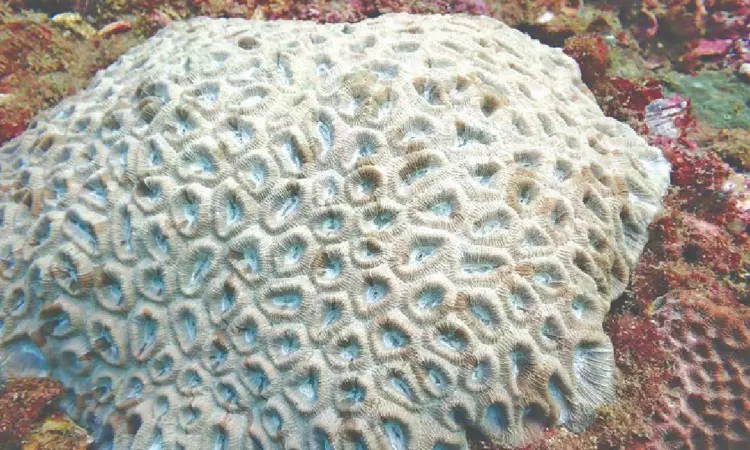Gulf of Mannar coral under threat as seagrasses take over
The 37 per cent of average coral cover in the Gulf of Mannar in 2005 has decreased to 27.3 per cent in 2021.

Gulf of Mannar coral
CHENNAI: A large portion of coral reef habitat is completely covered by macroalgae or seagrasses, highlights the report by the Environment, Climate Change and Forest Department and Suganthi Devadasan Marine Research Institute (SDMRI) in Thoothukudi.
The report titled ‘Coral Reefs of the Gulf of Mannar, Tamil Nadu, India: Decadal Changes in Status and Management Paradigms’ said that benthic community (underwater organisms) shifts between 2005 and 2021 due to climatic and human-induced factors reduced the reef area cover from 11,060 hectares in 2005 to 6,628 hectares in 2021.
“Many regions which used to be the reef areas are now completely occupied by macroalgae or seagrasses because of the mass coral moralities and the take-over of the space by other fast-growing benthic dwellers. Out of the available 6,628 hectares, 2,631 hectares are currently in a degraded state indicating that the benthic dynamics will lead to drastic changes in the future,” the report highlighted.
The 37 per cent of average coral cover in the Gulf of Mannar in 2005 has decreased to 27.3 per cent in 2021. Interestingly, the average coral cover increased to an all-time high of 42.9 per cent in 2009 due to a complete halt of coral mining activities after the 2004 tsunami. However, there was severe coral bleaching in 2010 due to the second global coral bleaching event, and consequent coral mortality reduced the average coral cover to 33.2 per cent.
On the other hand, the coral cover increased gradually and reached 38.9 per cent in 2015. Severe bleaching due to the third global coral bleaching caused significant mortality in 2016, and the coral cover was reduced to 22.7 per cent. But subsequently average coral cover increased to 27.3 per cent in 2021, suggesting recovery. The coral moralities that occurred in 2010 and 2016 impacted all 21 islands.
“Future climatic projections for the Gulf of Mannar are not bright because the down-scaled climate projections showed that all 21 islands are predicted to experience annual severe bleaching (ASB) under a high emissions scenario before 2070 and bleaching twice per decade before 2060. It is also predicted that the onset of ASB will have a north-to-south gradient as the islands in the Mandapam region will experience ASB before 2045,” the report warned.
Bakan Jagdish Sudhakar, wildlife warden of Ramanathapuram and director of Gulf of Mannar Biosphere Reserve Trust (GoMBRT), explained that bleaching occurs due to the increase in surface temperature of sea and bleaching will affect the pigmentation of corals making them unable to grow.
“However, the corals will grow again after the bleaching event. Apart from this, the government is implementing an artificial reefs project to restore coral reefs in the biosphere region, “ he said.



